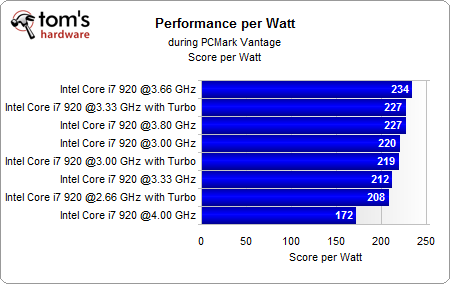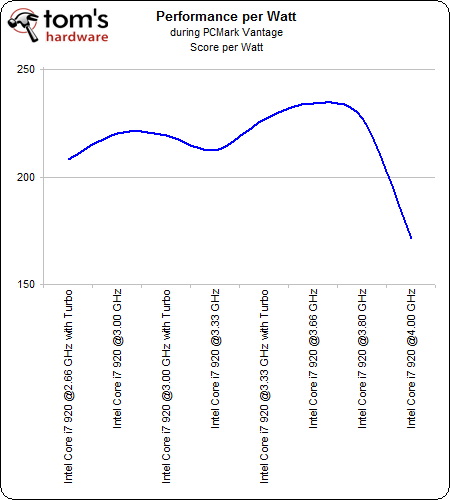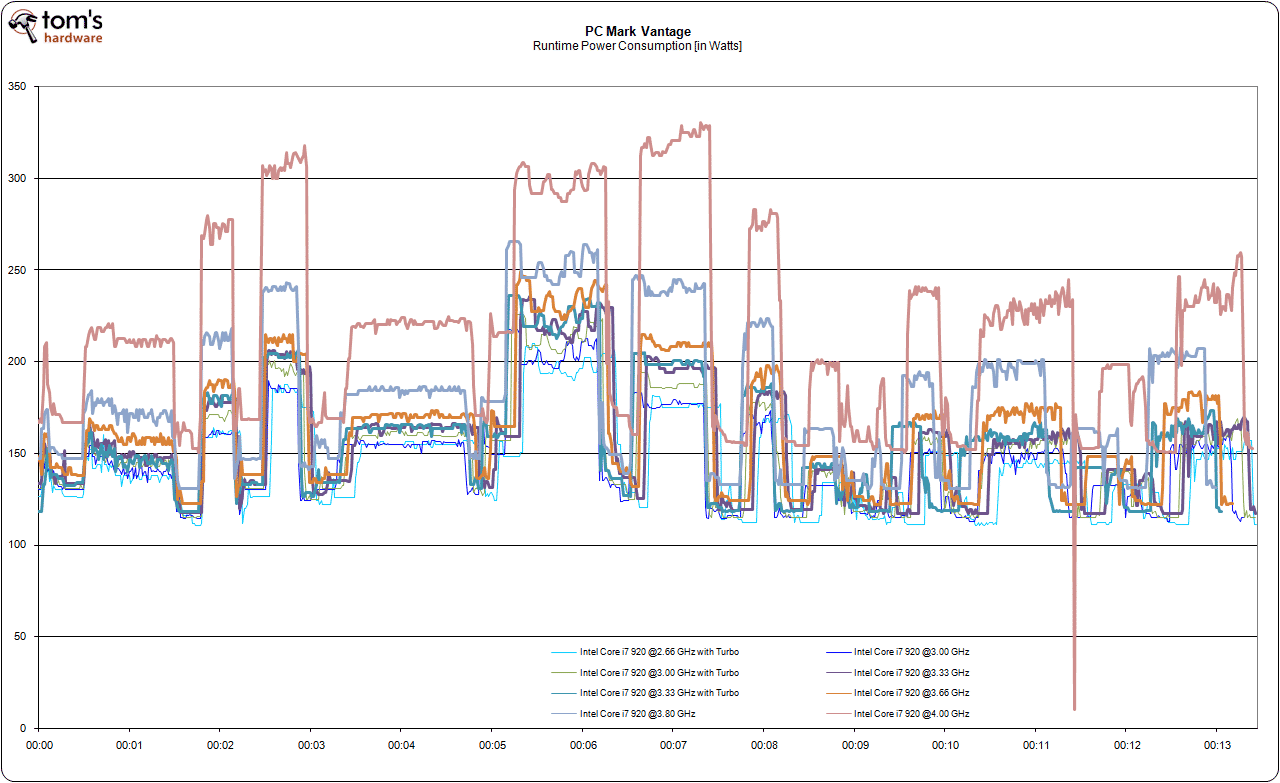Overclocking Core i7: Power Versus Performance
Efficiency Results
We related the PCMark Vantage score to the power in watt-hours that it took to complete the workload. Here are the results, normalized to the 2.66 GHz stock speed:
| Core i7 920 (2.66 GHz) | Efficiency Change |
|---|---|
| 3.0 GHz | +1.9% |
| 3.33 GHz | +9.1% |
| 3.66 GHz | +12.5% |
| 3.8 GHz | +9.1% |
| 4.0 GHz | -17% |
The 3.66 GHz setting offers the best increase in performance per watt-hour for the PCMark Vantage benchmark. Running the CPU at 4.0 GHz actually decreased energy efficiency by 17%, as it requires much more power without delivering a substantial performance benefit.
This diagram visualizes the efficiency with increasing clock speed, and shows impressively that the 3.66 GHz setting provides the best performance per watt for this particular workload. Despite being a synthetic benchmark, this is not too far off for intensive operation.
Finally, we don’t want to conclude without the power diagram for the different configurations in PCMark Vantage. Very obviously, the 4 GHz setting requires most power.
Get Tom's Hardware's best news and in-depth reviews, straight to your inbox.
Current page: Efficiency Results
Prev Page Average And Total Power During PCMark Next Page Conclusion

